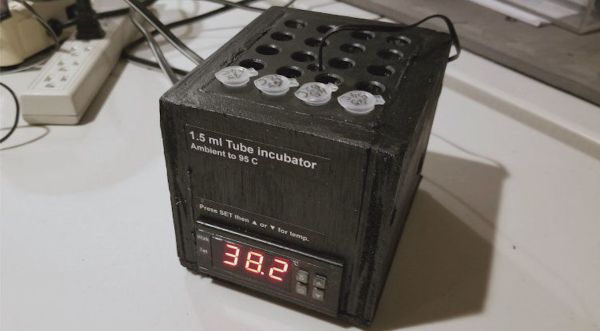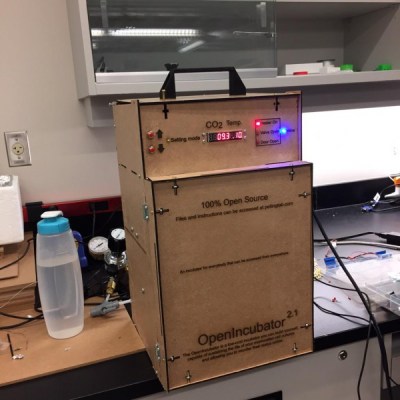[abizar] lucked into some aluminum blocks, one of which had test-tube-sized holes in it–just the thing to turn into a dry bath for his biology projects.
He stuck a 100W positive temperature coefficient heater into the bottom of the block using silicone glue, and the heater heated the block up in around half an hour. He connected a temperature controller to maintain the temperature at an ambient 95C, with a controller monitoring a thermistor to keep the block within the pre-determined range. The heater has an auto shutoff if it got too hot, so [abizar] felt safe keeping the dry bath on, unmonitored.
The aluminum block sits in a plywood box lined with rubber from an inner tube, with the heater underneath the block and the temperature controller underneath that, separated by more plywood from the heat. The result? A dry, temperature regulated bath for 20 1.5ml test tubes.
Looking to tool up? Check out the plethora of biohacking tools on Hackaday, including a DIY CO2 incubator, a basic biohacker’s toolkit, and a cheap electrophoresis rig.
















